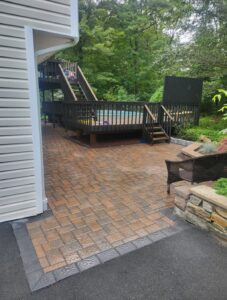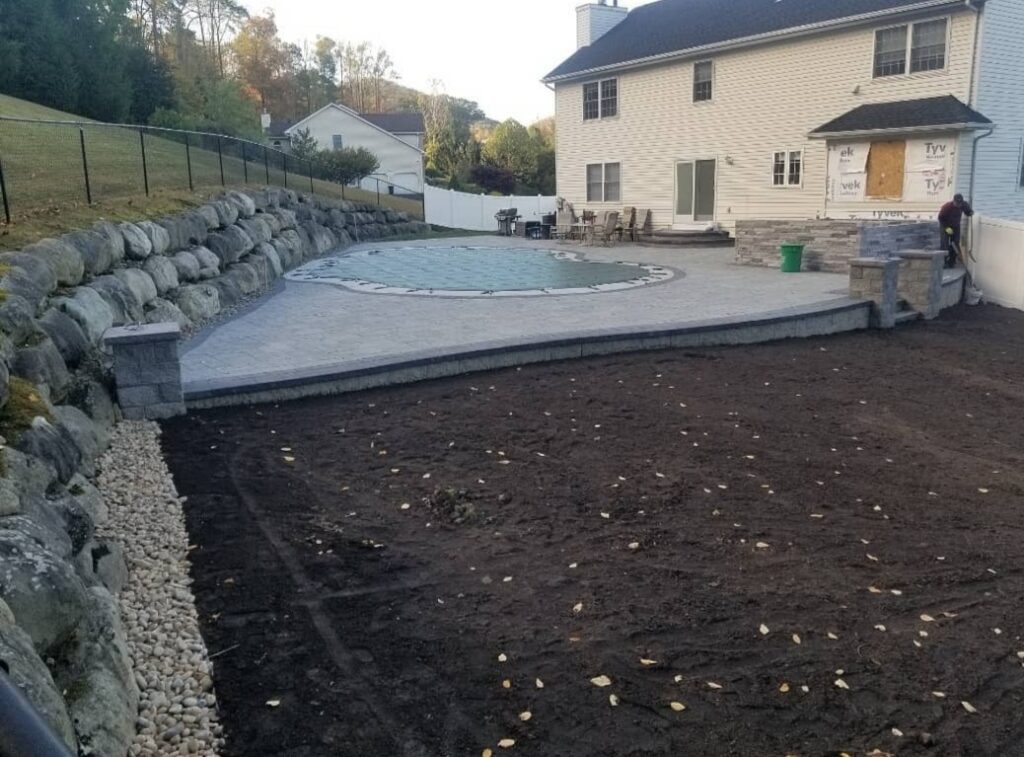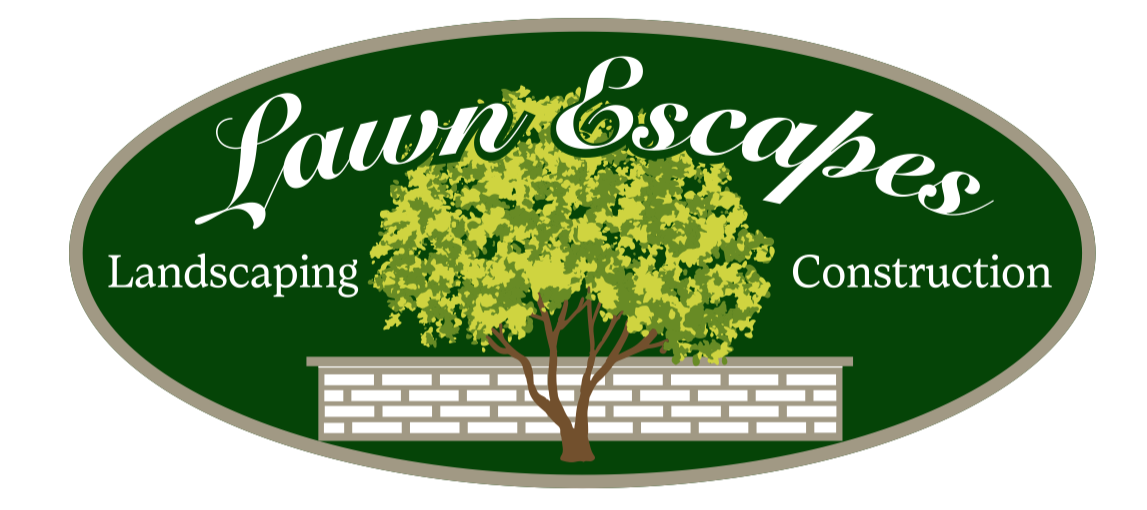
Hardscaping is a crucial component of landscape design that serves both aesthetic and functional purposes. Hardscapes are the non-living features of your property, such as stairs, walkways, fountains, walls, and more. Well-designed hardscapes are both aesthetically pleasing and highly functional. They also make it easier to interact with the environment and enjoy your outdoor space. Here’s everything you need to know about hardscaping and why you should invest in it for your outdoor space.
What is a Hardscape?
Hardscapes are any component of your outdoor space that isn’t living. Most hardscapes consist of man-made structures and materials, such as concrete, synthetic stone, and metal. However, naturally-occurring rocks can also be part of your hardscaping.
Why Hardscape Your Yard?
There are many reasons to add hardscapes to your yard. Not only do they enhance the look and feel of your space, but they also make your outdoor space much more functional. Here’s why you should consider hardscaping your yard.
Aesthetically Pleasing
Well-designed hardscapes complement the plants in your yard to create a look that’s visually appealing. For residential properties, adding hardscapes gives your property instant curb appeal. For commercial properties, installing hardscapes can make your business look more enticing and even increase foot traffic.
Spend More Time Outside
Great hardscapes help you make the most of your outdoor space. For example, a deck or a fire pit will give you a comfortable place to sit and socialize in your yard. This makes it easy to spend time outdoors when the weather is nice.
Safer Walking Paths
You can use hardscapes to create safe, stable walking paths throughout your property. This is particularly helpful if your yard contains unstable terrain. It’s also particularly important for commercial properties, as you’ll need to make your space accessible to people regardless of their mobility level.
Guide Water Runoff
You can use hardscapes to control the direction that water flows in your yard. Controlling water runoff can reduce the need for sprinklers and manual watering, particularly if you live in an area with high levels of precipitation. Guiding runoff also helps protect your plants from water damage and prevents erosion over time.
Improve Property Values
Investing in high-quality hardscapes makes your property more desirable and increases its overall value. This can help you when it comes time to sell your property. Not only will the hardscapes increase the sale price, but they can also make it easier to find an interested buyer.
Types of Hardscapes
There are many different types of hardscapes you can implement in your outdoor space. Many people combine multiple hardscapes as part of a broader landscaping design.
Walkways and Stairs
Walkways are an essential form of hardscaping. Well-designed walkways enhance the natural beauty of your landscaping, and they also make it easy to walk around your yard. Walkways allow you to navigate your yard without stepping on plants or getting your shoes dirty.
Depending on the layout of your property, you may need walkways leading to your front door, from the front yard to the back yard, or connecting various other hardscape features. If your property is on an incline, you may also need stairs to make it accessible.
Your walkways should be made from materials that are durable and stable. It’s also very important that you use materials that don’t get slippery when wet, as this could lead to injuries. On top of that, walkways should be wide enough for people of all shapes and skill levels to navigate.
Driveways
Driveways are necessary for cars to access your property. Most homes and businesses come with some form of driveway built in. However, you might decide to expand your driveway or add a second one for the back of your home, which will support more cars. Some people also opt to redesign their driveway with different materials that are a better match for their home’s aesthetic.
Upgrading your driveway can immediately make your home look more sophisticated. For example, you can switch from a traditional concrete driveway to one made from stone pavers, which adds visual interest.
Retaining Walls
Retaining walls are a type of hardscape that serves an important functional purpose. These walls are built in to a landscape that has an incline. The walls are load-bearing and keep the soil in place to prevent erosion. If your yard is on a steep incline, you may need retaining walls in order to use it safely.
These walls can also create visual interest and dimension in your yard. This is because they essentially divide your yard into multiple levels. Because these walls need to be very rigid, you won’t have too many options to choose from in terms of shape. However, you can choose your materials that match the color and tone of the rest of your yard.
Retaining walls are the most common type of wall used in hardscape design. However, you might also opt to add some freestanding walls to your yard. Many people will do this if their property is very close to their neighbors. Installing a freestanding wall is an easy way to create more privacy. If you want to add more color to your yard, you can even paint a mural on your walls.
Decks and Patios
Decks and patios are both ways to expand your usable outdoor space. They create a natural space for you to socialize with friends, family, or customers.
While they essentially serve the same purpose, decks and patios have some key structural differences. A deck is an elevated outdoor space that’s attached directly to your house or business. A patio is located directly on the ground and can be either attached or detached. You’ll need to decide which one makes the most sense for you based on the layout of your property.
Decks are typically made from wood or composite and have railings for safety. Patios can also be made from a wider range of materials, including concrete, brick, or stone pavers. You may also want to add a covering to your deck or patio. A covering can will help you cool on hot, sunny days and can also protect your outdoor furniture from water damage during storms.
Fountains and Ponds
Water features are a great way to add some style and flair to your landscaping. Flowing water has a naturally soothing quality, and it’s a good way to break up other garden features. If you want something with a dramatic look, you might opt for a large fountain. Fountains and ponds may be a better option if you prefer a more subtle look.
To build these water features in your yard, you’ll need to install electrical lines and a pump. This might not be possible in every space. Have a professional landscaper assess your space before you start the project to make sure it’s viable.
Fire Pits and Fire Places
Fire pits are another excellent way to make your outdoor space more welcoming and suitable for social gatherings. These are structures that are designed to help you build an outdoor bonfire safely. Some fire pits also have grills or other barbecuing features so you can enjoy a meal outdoors. Most fire pits also have communal seating areas nearby so everyone can enjoy the warmth.
Most fire pits are made with durable brick or stone materials that can handle the hot temperatures. They need to be built with safety in mind, especially if you will have children or animals playing nearby. There are many different types of fire pits you could install. Some fire pits are DIY, so you’ll need to build the fire from scratch every time. Others have gas burners, so all you’ll need to do is flip a switch to get the fire started.
Gazebos, Pergolas, and Arbors
Gazebos, pergolas, and arbors are all charming hardscapes that add some shade to your space. Installing these hardscapes in your yard can immediately make your space feel warmer and more welcoming. These structures are usually made from wood, although they can also be made from metal. You may even be able to grow vines or flowers in these structures to make them even more beautiful.
An arbor is a small arch that sits over a pathway in your yard. Arbors are often used to mark an entrance or exit to a specific area of your yard. Pergolas are similar to arbors, but they are much larger and create more shade. They are often placed over a patio. A gazebo is a shaded area with a small patio inside. Gazebos usually have charming sloped roofs and railings. They are usually built in an octagonal, hexagonal, or circular shape.
Bridges
If you have a large water feature in your backyard, such as a pond or a stream, you might also want to install a bridge over the water feature. This can be done for functional or aesthetic reasons. If your water feature is very large, you might need to install a bridge to reach the other side. Bridges can also be very visually appealing and create a nice vantage point in your yard.
Pools
If you opt to install a pool in your backyard, you will need to add hardscapes around it. Most homeowners opt to add pavers to the area directly surrounding the pool. These hardscapes will help integrate your pool with the rest of the yard. It also gives you a convenient and safe place to dry off after a swim or to add some lawn chairs. When installing a hardscape around your pool, be sure to avoid materials that could get slippery when exposed to water.
Popular Hardscape Materials
There are many different materials you’ll encounter when installing hardscapes in your yard. Each of these materials has its pros and cons, so you’ll need to evaluate all your options to determine what works best for your project.
Brick
Brick is a very popular choice for hardscaping projects thanks to its durability. If the buildings on your property are also made from brick, using it in your hardscapes will instantly give your yard a sense of cohesion. You can also use brick to create natural patterns and textures in your space.
Concrete
Concrete is another highly durable choice for hardscaping. It’s relatively affordable and works for many different hardscaping projects. While concrete on its own isn’t necessarily the most aesthetically pleasing, you can add stains or texture to give it a bit of visual interest.
Gravel
Gravel and other loose materials are very effective for filling in open spaces in your yard that don’t have plants. You can also use gravel to visually break up different sections of your space. For example, you could use gravel as a natural divider between your lawn and your flower garden.
Stone
Many people choose stone for their hardscapes because it has a modern, sophisticated look. This is typically done using stone pavers to create a specific shape or pattern. Stone comes in a variety of different shape and color options.
Wood
Wood is a very popular material for decks, gazebos, and pergolas. It has a rustic, natural feel to complement the other plants in your yard. It’s important to note that wood hardscapes need regular treatment and maintenance to prevent them from rotting.
Tile
Outdoor tile is a great way to create visual interest on patios, fountains, walls, and other features. It comes in a wide variety of colors and finishes and can be mixed and matched to create patterns. However, some types of tile can be slippery, so you’ll need to be very careful with where you put it.
Composite
Composite is a synthetic material that is often used as an alternative to wood decks. Many homeowners prefer this option because it is more durable and requires less maintenance. However, composite decking can come with a higher price tag.

Let Lawn Escapes Build Your Hardscapes
Looking to install hardscapes on your property? Lawn Escapes can help. Our team of professional landscaping experts can design, build, and maintain your hardscapes to get your lawn looking great. We serve clients in Bergen County, NJ, Rockland County, NY, Westchester County, NY, and Fairfield County, CT. Get in touch today to learn more or schedule an appointment!
